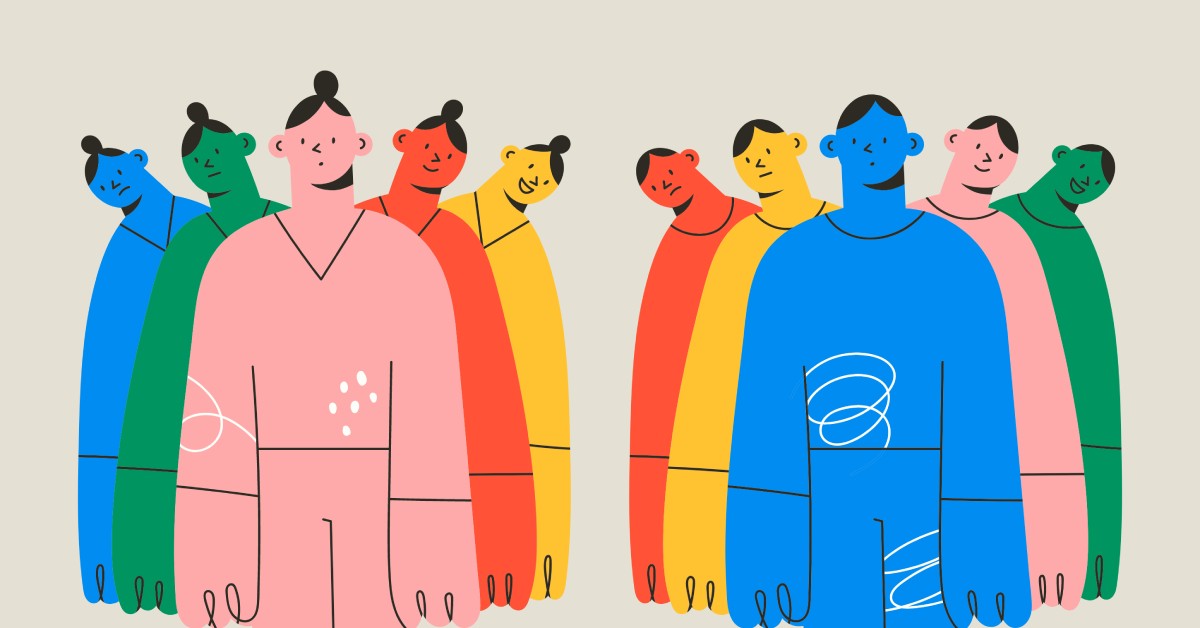Bipolar disorder and borderline personality disorder are often mistaken for each other in preliminary diagnoses. They have similar symptoms, like impulsiveness and mood swings, but many differences. Mood swings and impulsiveness may be natural responses to certain situations like stress, a lack of sleep, low blood sugar levels, and hormonal changes. Still, when they’re at their extreme, they may be linked to either of these conditions (bipolar disorder and borderline personality disorder).
What Is Bipolar Disorder?
Bipolar disorder, previously known as manic depression, exhibits extreme mood swings between highs and lows. The highs are called mania, and the lows are depressive.
Symptoms Of Bipolar Disorder
Bipolar disorder mood swings are not caused by conflicts with other persons. The mood swing could last for days, weeks, or months. The symptoms include changes in sleep, energy, speech, and thinking.
A person may experience the symptoms below during mania:
- An excessive, angry, or irritated mood
- Exerting more mental and physical energy for activities than necessary
- Racing thoughts and ideas
- Talking more and quickly
- Making big plans
- Risk-taking
- Impulsiveness (Drug or alcohol abuse, sex, frivolity, etc.)
- Less sleep, but no feeling of being tired
- Poor judgment
A person may experience these symptoms during depression:
- Drop in energy
- Lasting sadness
- Less activity and energy
- Restlessness and irritability
- Problems focusing and making decisions
- Worry and anxiety
- No interest in favorite activities
- Feelings of guilt and hopelessness
- Suicidal thoughts
- Change in appetite or sleep patterns
Treatment: The treatment for this condition could be mood stabilizers, antidepressants, or antipsychotics. Sometimes, therapy can help people battling bipolar disorder by fostering self-understanding and coping skills to control the symptoms.
What Is Borderline Personality Disorder
People suffering from borderline personality disorder experience a roller coaster of moods, behaviors, and self-images.
This pattern causes problems that affect a person’s life and interaction with others. According to the National Institute of Mental Health, approximately 1.4 percent of adults have borderline personality disorder.
Symptoms Of Borderline Personality Disorder
Borderline personality disorder causes unstableness in people’s self-image, mood, and behaviors. This symptom can lead to reckless actions and turbulence in their relationships. The symptoms include:
- Uncertainty about one’s reason for existence in the world
- Frequently losing interest and changing values
- A tendency to view things either as all positive or all negative
- Having an unstable opinion about things or others quickly
- Treating someone as a friend one moment and putting them at arm’s length the next
- A pattern of unstable deep relationships with friends and relatives, for whom feelings switch from love to hate and anger
- Having low self-esteem or a distorted sense of self
- Stopping communications with someone because you feel like they’d cut off ties with you either way
- Engaging in self-harm like cutting, burning, and abusing substances
- Have extreme trust issues sometimes because of fear of what they might or might not do
- Entertaining thoughts of suicide
- practicing impulsive behaviors such as drug abuse, misuse, extravagant spending, and reckless driving
- Extreme episodes of anger, anxiety, and depression
- Feelings of emptiness
- Fear of being alone
Not everyone with BPD goes through all these symptoms. Some people may experience slight symptoms, while others may experience severe symptoms.
Treatment: People with borderline personality disorder are expected to undergo long-term treatment. This treatment could be psychotherapy, ketamine infusion or transference-focused psychotherapy, designed to help people manage impulsive reactions and actions.
Examples of psychotherapy include:
- Psychotherapy treatment could include Interpersonal and social rhythm therapy (IPSRT):
IPSRT helps the patient to maintain balance in their sleeping, walking, and mealtimes routine. A balanced and consistent practice helps to improve mood management. People with bipolar disorder can improve their symptoms with proper sleep, diet, and exercise routine.
- Psychoeducation:
Learning about bipolar disorder can give you a better understanding of your condition. Knowing what’s going on can help you seek the proper support, identify other symptoms and help stick with treatment.
- Cognitive behavioral therapy (CBT):
CBT aims to identify negative behaviors and beliefs and replace them with healthy and positive ones. CBT can help discover what triggers your bipolar disorder symptoms. You also learn how to manage stress and cope with your symptoms.
Conclusion
Ketamine therapy has proven effective in treating many mood disorders, providing long-term relief for many individuals. This treatment improves connections between neurons. Since borderline and bipolar disorder are characterized by a high level of emotional instability and social dysfunction, ketamine is an excellent treatment option for behavioral changes. Contact us today to learn more.






